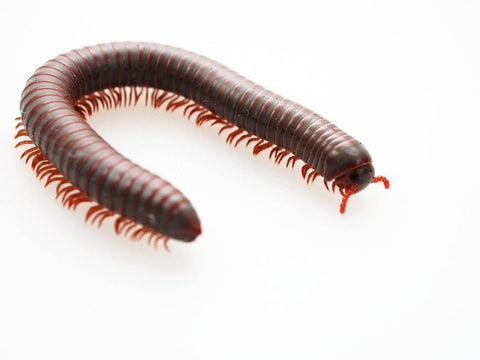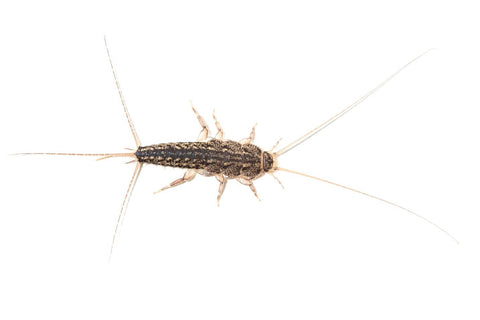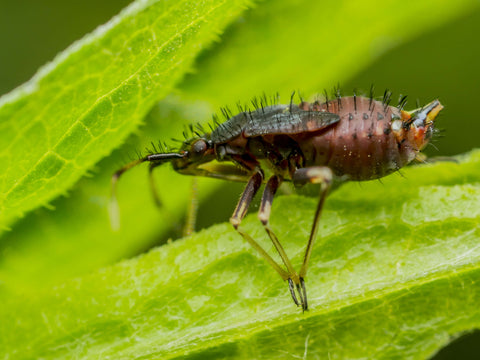Some bugs have a habit of entering homes throughout spring and summer. However, there are others that only stop by occasionally. These pests are driven into homes because of environmental factors. We’ve gathered information about common occasional invaders to help you identify and eliminate an infestation.
Occasional Invaders 101
Occasional invaders prefer to spend their time outside, but when weather conditions are no longer suitable, they head indoors. This can be a result of temperatures being too cold or too hot. The amount of rainfall can also cause them to seek shelter inside of homes and buildings. While occasional invaders can be active year-round, they are usually spotted in fall when temperatures begin to drop. These pests can be found anywhere in homes where there is moisture build-up. Occasional invaders aren’t dangerous, but some can cause damage to household items. Common invaders include centipedes, crickets, earwigs, millipedes, pill bugs, and silverfish.
Centipedes

Centipedes are known for the many legs they have. The number varies, ranging from 15 to 177 pairs of legs, but they always have an odd number of pairs. These pests are active at night and fast, which can make it difficult to spot them.
What Do Centipedes Look Like?
Centipedes grow between 1/8ʺ-6ʺ, but the ones most commonly found in homes grow to about 1½ʺ. They are elongated and flat. These invaders have yellowish-brown or gray bodies and some have stripes. House species are usually gray with 3 dark stripes and 15 pairs of legs.
Why Are Centipedes in My Home?
Centipedes thrive in dark, damp areas. These pests are attracted to moisture found in homes. They are often spotted in basements and bathrooms. They also enter homes in fall hoping to escape cooling temperatures.
Are Centipedes Dangerous?
Centipedes can bite, but they only do this when handled or threatened.
How to Prevent Centipedes
The best way to prevent centipedes is to reduce moisture in your home. Repair or replace leaky pipes. Use a dehumidifier or fan in damp areas to help keep things dry. You can also vacuum regularly to help get rid of any centipedes that may have snuck into your house.
Crickets

These chirping pests make their way inside when cooler temperatures arrive. There are many species of crickets, but the ones most frequently found in homes are the house, camel, and field cricket.
What Do Crickets Look Like?
House crickets are about ¾ʺ and have a light brown body with three bands on its head. The field cricket has a brown or black body and can grow up to 1ʺ. Camel crickets range in size from ½ʺ-1 ½ʺ. They are known for the arch on their brown back that looks like a camel’s hump.
Why Are Crickets in My Home?
Crickets enter homes in fall when temperatures drop. They seek warm spaces with areas to hide including under furniture and appliances. They also thrive in moist areas, so leaky pipes can attract them. Crickets gather near light sources too, which is why you may find them on your patio at night.
Are Crickets Dangerous?
The chirping of crickets may be annoying, but these pests aren’t dangerous. They will eat fabric, so they could damage household items and clothes. Camel crickets will gather in large groups.
How to Prevent Crickets
To help prevent crickets in your home, check for and seal entry points. Eliminate moisture build-up and remove any food sources. Keep your home and yard clean to reduce potential hiding spots. Swap white light bulbs for yellow bulbs to help deter crickets.
Earwigs

People used to believe that earwigs would crawl into people’s ears while they slept. This is only a myth, but it’s why they’re named earwigs.
What Do Earwigs Look Like?
These pests have a brown body that sometimes has a reddish tint. Their narrow body grows between ¼ʺ-1ʺ. Even though they have two pairs of wings, not all earwigs can fly. The ones that can fly only travel short distances. Earwigs have pincers on the back of their abdomen and can pinch skin when threatened.
Why Are Earwigs in My Home?
Earwigs prefer to be outside. When weather conditions are too harsh, they move indoors. You’re likely to see them as temperatures lower. They like damp and undisturbed areas. You can find them in bathrooms, basements, and kitchens.
Are Earwigs Dangerous?
An earwig’s pincers can pinch skin. However, they would rather run away than fight. They will release a foul-smelling liquid as a defense mechanism.
How to Prevent Earwigs
Eliminating sources of moisture and yard debris, like leaves and grass clippings, can help deter earwig activity. You’ll also want to seal any cracks or gaps to help keep these pests from entering your home.
Millipedes

Like centipedes, millipedes have quite a few legs. The number ranges from 30 to over 90 pairs of legs.
What Do Millipedes Look Like?
The millipedes likely to enter homes usually have a brown or black cylindrical body. They grow between 1/16ʺ-4 ½ʺ.
Why Are Millipedes in My Home?
In fall, groups of millipedes are known to migrate, and they sometimes enter homes. They also need water to survive. If there’s moisture build-up in your home or yard, millipedes won’t mind visiting.
Are Millipedes Dangerous?
Millipedes can release a liquid with an unpleasant scent to protect themselves from predators. This liquid can irritate human skin and can be toxic to small animals.
How to Prevent Millipedes
Eliminating sources of moisture can help prevent millipedes. Keep your yard clean since these pests like to hide under leaves and other yard debris. Minimize the clutter in your home to reduce potential hiding spots.
Pill Bugs (Roly-Polies)

Despite being called pill bugs, these invaders are actually crustaceans. Sometimes they are referred to as roly-polies because of their ability to roll into a ball when disturbed.
What Do Pill Bugs Look Like?
Pill bugs are typically gray, but they can also be brown or black. They have seven pairs of legs and two pairs of antennae. They are oval-shaped and have seven hard plates on their back. They grow between ¼ʺ-5/8ʺ.
Why Are Pill Bugs in My Home?
Pill bugs require a lot of moisture and struggle to survive indoors. However, they find their way inside through open doors, and they will hide in bathrooms or basements.
Are Pill Bugs Dangerous?
Pill bugs are a nuisance pest and not harmful to humans. If they feed on young plants, they can cause damage.
How to Prevent Pill Bugs
Pill bugs eat decaying plant matter, so remove this from your yard. You’ll also want to keep the area surrounding your home’s foundation dry.
Silverfish

Silverfish are nocturnal pests that are difficult to catch. They are quick and small and can easily slip into tiny spaces.
What Do Silverfish Look Like?
This occasional invader gets its name from its silvery, metallic coloring. Silverfish have a teardrop-shaped body and range in size from ½ʺ-¾ʺ. They have three appendages at the end of the body that look like tails. They don’t have wings, but they run quickly and can climb.
Why Are Silverfish in My Home?
These pests are attracted to moisture, and they’re often spotted in bathrooms, attics, and basements. They also enter homes looking for food sources including books, fabric, paper, and sugary ingredients.
Are Silverfish Dangerous?
Silverfish aren’t known to bite or carry any diseases. However, they can cause problems when they damage household items including books, wallpaper, and clothing.
How to Prevent Silverfish
Keeping your home dry and reducing humidity will help to prevent silverfish. It’s also important to keep your home and yard clean to minimize sheltering spots.
Springtails

These pests jump around, which is where they get their name. When threatened, they can fling themselves into the air.
What Do Springtails Look Like?
Springtails are small, measuring about 1/16ʺ. These pests vary in color. Some are lighter shades of brown, while others are darker. They have a forked tail-like structure.
Why Are Springtails in My Home?
These pests are attracted to areas with moisture and high humidity. Light can also lure springtails to your home and yard.
Are Springtails Dangerous?
Springtails aren’t harmful and not known to cause damage. However, they are known to gather in groups, leading to large infestations.
How to Prevent Springtails
Since springtails need moisture, it’s important to make sure your home is as dry as possible. You’ll also want to seal holes to keep these pests out of your house.
Occasional invaders may only enter homes when weather conditions change, but that doesn’t mean you want to welcome them. One of the best ways to keep these occasional invaders out of your home is to eliminate excess moisture. You can also treat an infestation with a plant-based insecticide spray like our Home Bug Spray. Not only will it kill on contact, it will provide you with residual repellency. Check out our Maggie’s Farm Simply Effective™ Pest Control products for a more environmentally and family-friendly solution.
